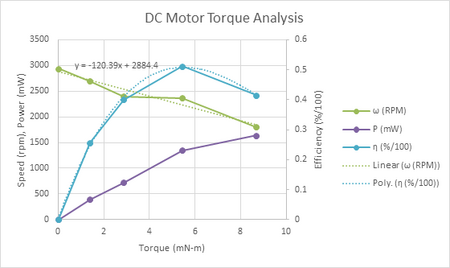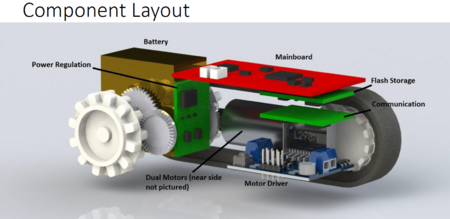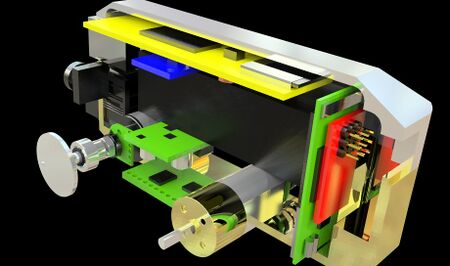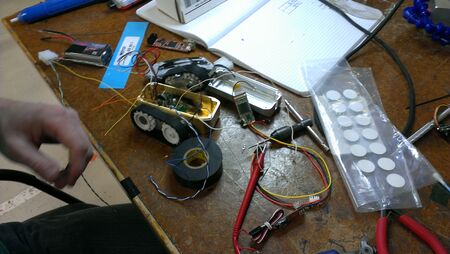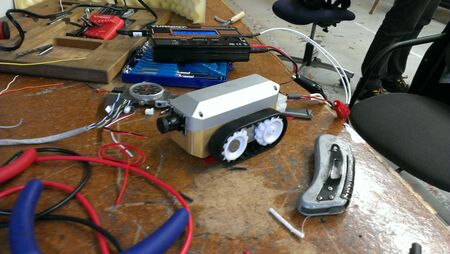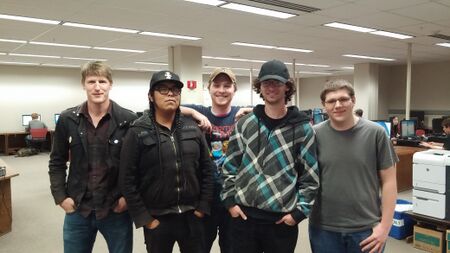Mapping Rabbit Burrows
| Pygmy Rabbit | |
| Sponsor : | Dr. Janet Rachlow |
| Team Name : | Rabbotix |
| Duration : | Fall 2014 - Spring 2015 |
| Faculty Advisers |
|
| Students | |
The pygmy rabbit (Brachylagus idahoensis) is a North American rabbit, and is one of only two rabbit species in America to dig its own burrow.[1] The goal of this project is to design and build a device that can enter a pygmy rabbit burrow. Once inside the burrow area measurements, distance measurements, and video images will be collected and used to generate a 3D map of the burrow.
Problem Definition
Background
The pygmy rabbit digs burrows into the ground, which help to keep it safe from predators and the cold winters of its environment. These burrows are important to the pygmy rabbit, but they are also very important to the local ecosystem. The burrows are often used as shelter for other animals who cannot dig their own burrows. They also have an impact on soil density, temperature and water retention, which impacts surrounding plant life.
The pygmy rabbit has a very strong impact on the plants and animals of its environment, and as such is important to study. Some important data on the rabbit burrows is presented below:
• Burrow diameter between three and eighteen inches
• On average, each burrow has between three and five entrances, with an expected maximum of fourteen entrances
• Each burrow is between a meter and one and one-half meters under ground
• Each burrow entrance will be between two and three meters away from other entrances
Specifications
| Parameter | Metric | Target Value | Acceptable Value | Actual Value |
|---|---|---|---|---|
| Device Size | Diameter in inches | 3" | 3.5" | 3" |
| Minimum Sensor Distance | Milliimeters | 0mm | 10mm | 0mm |
| Maximum Sensor Distance | Centimeters | 20cm | 10cm | 10cm |
| Top Speed | Meters per Second | 0.25 | 0.25 | 0.25 |
| Video Quality | Resolution | 1280x720 | 640x480 | 1280x720 |
| Run-Time | hours | 1 | 1 | 1 |
| On-Board Data Memory | Giga Bytes(GB) | 8 | 4 | 16 |
| On-Board Video Memory | Giga Bytes(GB) | 32 | 32 | 32 |
The requirements for the project are as follows.
The robot must:
• Fit inside wide range of rabbit burrows
• Take measurements of the burrow space which may be used to provide volumetric data
• Record images of the burrow interior to be used by client
• Record all relevant data and return to the surface in a timely manner
• Be useable by the client with no special skills
• Operate for a period of one hour
Project Learning
Motor Characterization
Objective:
A characteristic Speed (S) vs. Torque (τ) curve is needed for a particular motor pair in order to predict motor performance in operation. This information may be used for engineering purposes such as gear ratio selection, operational voltage, and speed control. Efficiency (η) and Power (P) vs. Torque curves are also desired in order to select an ideal operating point with regard to motor speed. As these curves are not available for the pair of motors intended to be used in the prototype build, they must be developed experimentally.
Methodology:
A matched motor pair may be assumed to have equal efficiency, power and torque characteristics. Using this equivalency, one motor of the pair may be used to drive the other as in a motor/generator pair. As a load is applied to the generator side, the speed, input power to the drive motor and output power from the generator are monitored at varying load levels. Holding the input voltage constant, the efficiency, torque and power may be determined algebraically for each data point resulting in the desired characteristic curves. An Engineering Equation Solver (EES) script is used to model the desired operating conditions for a prototype model, and to calculate prototype performance based on the experimental data. A 30:1 gear ratio is desired for the prototype for manufacturability purposes. Because there is no maximum requirement for speed in this prototype, the model is used primarily to verify that minimum torque and power requirements are met.
Reflection:
As the operating point sits above the desired torque and speed output, it is likely the motor will be run below the assumed 12V EMF input. In order to locate a more appropriate operating point, it would be valuable to perform a similar experiment in which the load resistance was varied, and the input voltage was adjusted to achieve a specified angular velocity. A torque vs. voltage curve could then be generated for a specified gear ratio and vehicle velocity. Such an experiment may be useful to perform on the final motors as well, as such data is not typically given.
Soil Analysis of Lemhi, Idaho
Approach:
This data was acquired by consulting a soil survey of the Custer-Lemhi area of Idaho, taken by the United States Department of Agriculture and the Natural Resources Conservation Service. The survey was used to find soil information, which was then checked against known tire tread data to develop a traction model for the treads of the robot.
Executive Summary:
The soil of Lemhi, at the depths of interest for the project, will have an angle of repose of about 30 degrees, and be primarily loamy-clay. This means that the coefficient of friction between our treads and the soil will be approximately 0.4-0.5. Taking into account the mass of the robot, this will result in an ability to pull approximately 2 pounds of control tether into the burrow system.
Characteristics of Lemhi
Typical profile:
3 inches to 0—slightly decomposed roots, leaves, and stems
0 to 13 inches—dark gray loam
13 to 21 inches—grayish brown loam
21 to 24 inches—grayish brown loamy sand
24 to 60 inches—multicolored extremely gravelly coarse sand
Depth class: Very deep
Drainage class: Poorly drained
Permeability: Moderate in the upper part and very rapid in the lower part
Available water capacity: 4.0 to 5.5 inches
Effective rooting depth: 20 to 40 inches
Runoff: Slow
Hazard of water erosion: Slight
Depth to high water table: 12 to 18 inches in April through June
Periods of flooding: Frequency—occasional; duration—brief; months—January through
Use this color scheme for tables.
Design
The design decisions we have made are:
• Two motor tank style movement with tread.
• Device will be tethered to obtain reliable communications.
• Device will be battery powered.
• Infrared distance finders will measure cross sectional area.
• 8 distance sensors will be used around the device.
• A forward and a rear facing camera will be used.
• The forward camera will record to an on-board dvr.
Components
| Component | Selected Part | ||
|---|---|---|---|
| Computer | olinuXino-Nano IMX 233 iMX233 ARM926J processor at 454Mhz | ||
| Camera | pz-2 mini FPV camera + DVR Records AVI file at 1280*720 60fps | ||
| Range Finder | Sparkfun ToF Breakout VL6180 measure 0-10cm(datasheet) has been tested up to 25cm | ||
| Acellorometer | MPU-6050 3 Axis Accelerometer Sensor & Gyroscope Tri-Axis angular rate sensor (gyro) | ||
| Motor | Pololu 115:1 Metal Gearmotor 15.5Dx30L mC39 Brushed DC motor with an enclosed 115:1 metal gearbox
Dimensions - 1.16" x 0.61" x 0.61" | ||
| Motor Controller | Pololu Qik 2s9v1 Dual Serial Motor Controller Serial interface to set speed and direction of two motors | ||
| Battery | 11.1V Lipo 1350 mAh Prolite Power Max Continuous Discharge: 25C | ||
| Video Switch | |||
| Wheels/Track | Pololu 22T Robot Track a pair of 22-tooth silicone tracks, | ||
Models
Our device is called Alice which stands for: Animal Lair Imaging and Cartographic Equipment.
A 3D model of our first design. |
A labeled model of the first design showing the interior components. |
A 3D model of our final design. |
A model of the final design showing the interior components. |
Alice being assembled. |
Alice after being assembled. |
Team Information
| Picture |
|---|
| Team Members(Listed from Left to Right) | Discipline |
|---|---|
| Daniel Schneider Daniel aids Nick and Alex in mechanical analysis, and works with Brandon to select and integrate hardware. He is also responsible for machine shop activity and a large portion of prototype fabrication, as well as mechanically critical hardware considerations. |
ME |
| Alexius Pinkham Alex provides design decision documentation, and indicators of performance to further enhance system design. He works alongside Nick and Daniel in performing mechanical design analyses and manages the part-file database for CAD related materials. Alex is also charged with graphic design for team logos and merchandise. |
ME |
| Donald Bellevue Donald is tasked with ensuring team productivity lay in line with the client’s desires and demands. He does so by relaying information back and forth with the client, and making it available for the rest of the team to use. Donald’s unique hybrid experience as both biologist and engineer makes him perfect for this position. Donald is also charged with keeping studious records of meetings and interpretation of field data supplied by the client. |
BAE |
| Nick Stocks Nick works alongside Alex and Daniel to supply the team with quality mechanical design analyses used to influence design decision making. Nick is also responsible for keeping time estimates for each member of the group, and monitoring progress of the project with respect to milestones. |
ME |
| Brandon Bitseff Brandon is especially suited to deal in the computer controls expected in our system. He is required to make final selections in electrical components to ensure compatibility in hardware and software. Brandon supplies firmware used in data collection, motion control and video stream support. |
CompE |
Sponsor
Janet Rachlow is a mammalian ecologist interested in behavior and conservation of both rare and common mammals. Her current research focuses on habitat relationships of diverse species, with an emphasis on understanding the consequences of habitat modification. Rachlow along with her students and collaborators conduct field and laboratory studies to address questions that can help manage and conserve wildlife and their habitats. Janet enjoys outdoor activities and Idaho’s terrific wildland resources.
Instructor
Dr. Joel C. Perry is a new member of the Mechanical Engineering Department as an assistant professor with a focus on robotics and engineering design. He received a B.Sc. degree in mechanical engineering from Gonzaga University in 2000, and M.Sc. and Ph.D. degrees in mechanical engineering from the University of Washington, in 2002 and 2006 respectively. Dr. Perry spent the past 6 years working abroad in the Department of Rehabilitation Technologies at Tecnalia Research & Innovation in San Sebastian, Spain, where he managed R&D activities in the development of low-cost solutions for upper extremity rehabilitation. Before joining Tecnalia, Dr. Perry was involved in the development of a 7 degree-of-freedom (dof) arm exoskeleton, a 5-dof high precision positioning robot, a 5-dof surgical simulator, a novel 2-dof surgical grasper, and a 1-dof powered prosthesis for early-stance gait improvements in trans-tibial amputees. His research interests include enabling technologies for upper and lower limb disability, rehabilitation robotics, and surgical robotics.
Document Archive
File:2014 RabMap Interview.pdf
File:2014 RabMap Design Review.pdf
File:2014 RabMap Motor Selection.pdf
File:2014 RabMap Poster.pdf
File:2014 RabMap Tech Presentation.pdf
File:2014 RabMap Design Report.pdf
